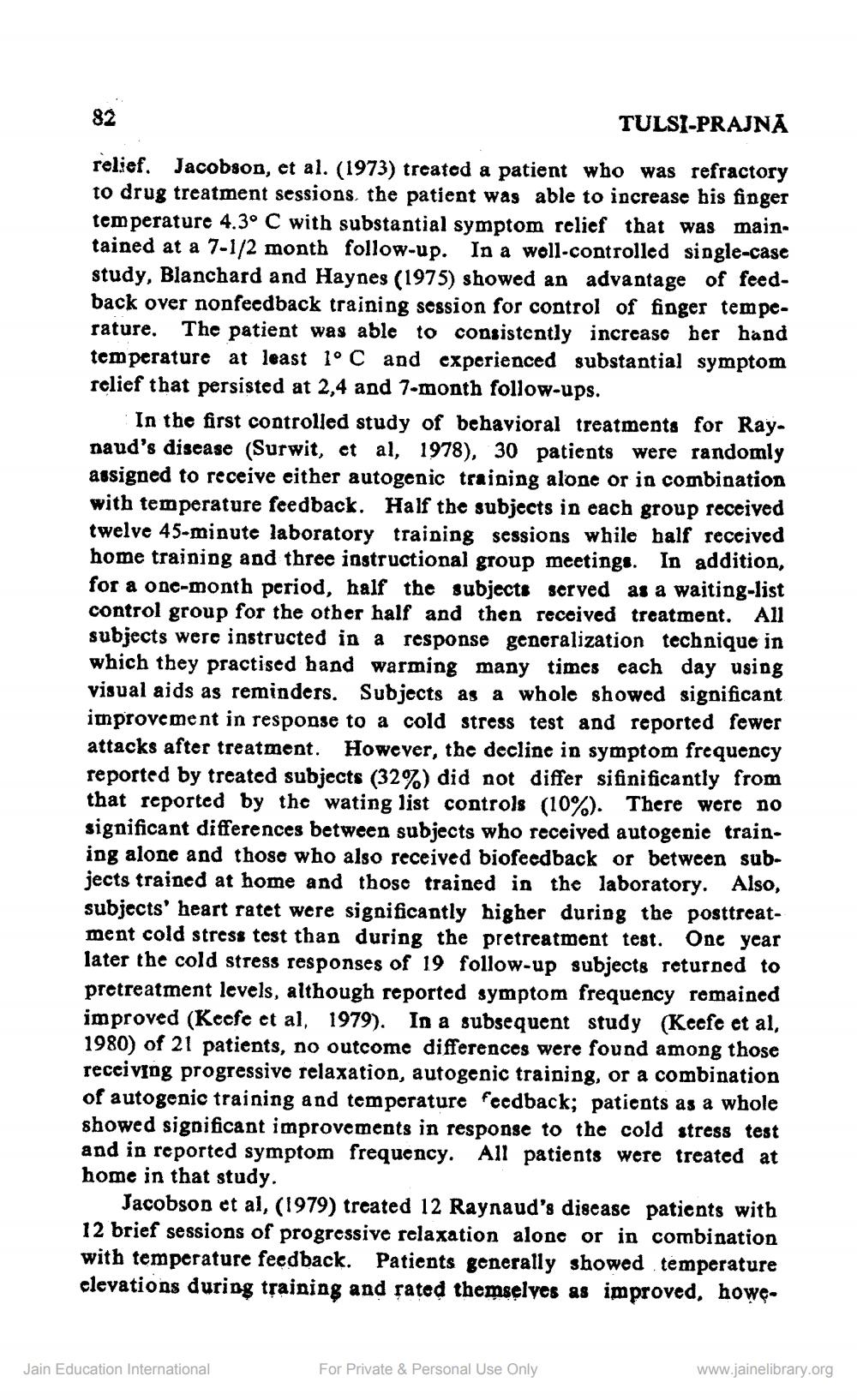________________
TULSI-PRAJNA
relief. Jacobson, et al. (1973) treated a patient who was refractory to drug treatment sessions, the patient was able to increase his finger temperature 4.3° C with substantial symptom relief that was maintained at a 7-1/2 month follow-up. In a well-controlled single-case study, Blanchard and Haynes (1975) showed an advantage of feedback over nonfeedback training session for control of finger temperature. The patient was able to consistently increasc her hand temperature at least 1°C and experienced substantial symptom relief that persisted at 2,4 and 7-month follow-ups.
In the first controlled study of behavioral treatments for Raynaud's disease (Surwit, et al, 1978), 30 patients were randomly assigned to receive either autogenic training alone or in combination with temperature feedback. Half the subjects in each group received twelve 45-minute laboratory training sessions while half received
ome training and three instructional group meetings. In addition, for a one-month period, half the subjects served as a waiting-list control group for the other half and then received treatment. All subjects were instructed in a response generalization technique in which they practised hand warming many times each day using visual aids as reminders. Subjects as a whole showed significant improvement in response to a cold stress test and reported fewer attacks after treatment. However, the decline in symptom frequency reported by treated subjects (32%) did not differ sifinificantly from that reported by the wating list controls (10%). There were no significant differences between subjects who received autogenie training alone and those who also received biofeedback or between subjects trained at home and those trained in the laboratory. Also, subjects' heart ratet were significantly higher during the posttreatment cold stress test than during the pretreatment test. One year later the cold stress responses of 19 follow-up subjects returned to pretreatment levels, although reported symptom frequency remained improved (Keefe et al. 1979). In a subsequent study (Keefe et al 1980) of 21 patients, no outcome differences were found among those receiving progressive relaxation, autogenic training, or a combination of autogenic training and temperature feedback; patients as a whole showed significant improvements in response to the cold stress test and in reported symptom frequency. All patients were treated at home in that study.
Jacobson et al, (1979) treated 12 Raynaud's disease patients with 12 brief sessions of progressive relaxation alone or in combination with temperature feedback. Patients generally showed temperature elevations during tộaining and rated themselves as improved, howe
Jain Education International
For Private & Personal Use Only
www.jainelibrary.org




